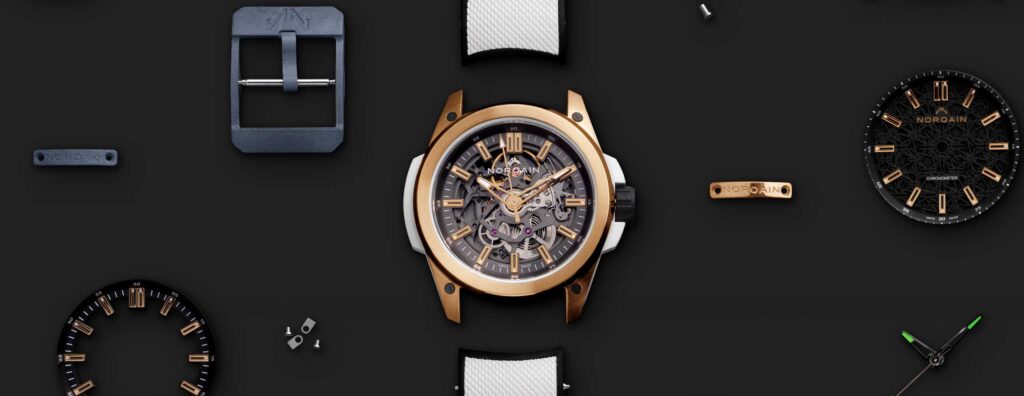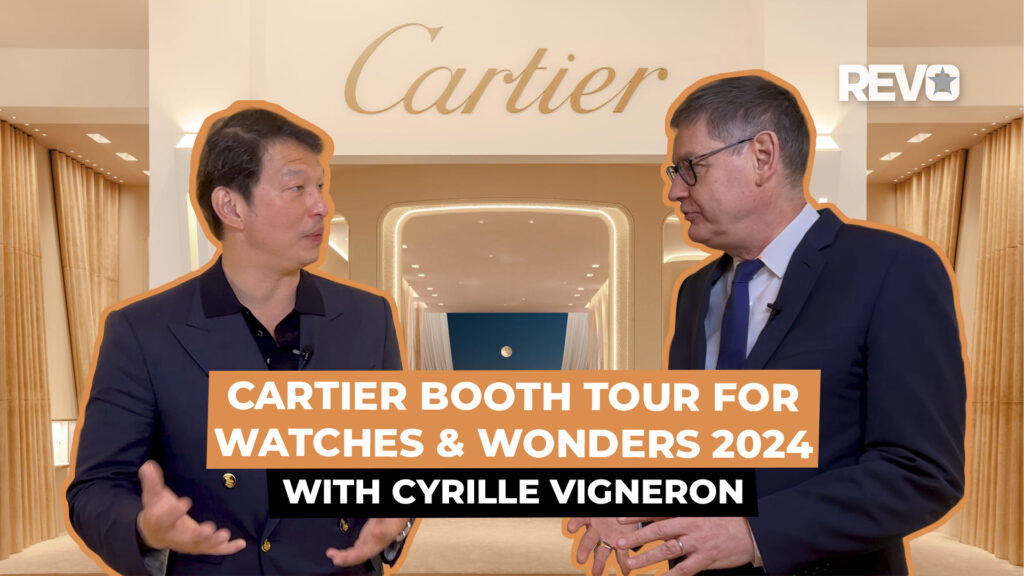Hamilton
The Watch-Loving Saturday Morning Sad Bastards
Hamilton
The Watch-Loving Saturday Morning Sad Bastards
We came together through a series of coincidences, our mutual interests somehow creating a force: we all love cars, hi-fi equipment, cameras, fountain pens and any other boys’ toys that happen to cause a flicker of curiosity. But rather than butcher, baker, candlestick maker, we are plumber, watchmaker, electronics wizard, newspaper designer and hack. And we love to put the world to rights every Saturday morning, meeting in whatever coffee shop will put up with us in East Kent. We’re on our fifth or sixth, having been thrown out of a few.
During the mid-1990s, timepieces took over for us as much as for the rest of the watch-loving community. We’ve all been at it for so long that our collections have matured and appreciated because of the sheer passage of time rather than commercial intent, and we’re happy to pool knowledge and finds, even sharing a table at the Brunel watch fairs. I suppose we’re a genuine posse of old farts.
and Switzerland.
Mid-1990s, I’m in a local camera store and my dulcet, American tones carry the words “Alpa 9D” to the rest of the shop. A tall chap approaches me and asks: “You must be Ken Kessler?” I reply: “How’d you figure that out?” To which the guy standing in front of me smiles and says: “You’re probably the only other person in Kent who owns an Alpa 9D.”
And that’s how permanent friendships sometimes come about. We’ve been hooking up weekly ever since. To talk about watches, cars and hi-fi and to set the world to rights.
Henry Nolan
Multi-award-winning designer Henry Nolan’s handiwork has been seen on everything from the Sunday Times Rich List to a trio of hardcover coffee-table books about hi-fi and watch magazines. A dedicated Porsche aficionado and guitar collector, he has an eye for design classics, including the 1960s Air Stream that hosted our latest get-together. We mused about how apt it would have been to be seen in it, back in the days when we were selling burgers in an Americana-themed eatery.
Nolan’s overriding watch priority is for the functional, his choices including two gems acquired long before he identified any particular predilection for owning more than one or two, and well before watches became an identifiable craze. His first watches were a steel Rolex Datejust, with grey dial, and an IWC Doppelchronograph. His tastes continue to reflect the purposeful.
His still-strong Scottish accent adds a whiff of 1960s cinema to his declarations, like Gordon Jackson in The Great Escape. At least, that’s what I hear when I see Nolan admiring the assorted pilots’ and diving watches spread out before us. His statement piece is a Panerai Luminor Submersible that he’s owned for over 10 years, but his heart belongs to Rolex and Tudor.
Tradition and classicism seem to dominate Nolan’s preferences: his latest purchase, thanks to careful monitoring of the Watchfinder homepage, is a fabulous Rolex Submariner of circa-1990 vintage. But just when you think Nolan’s taste is too focused, he produces the most colourful Fortis diving watch imaginable, a Marinemaster, among the wildest the group has ever seen. The least expensive timepiece in the collection, it turned out to be the most arresting. And Mark Webb wouldn’t let go of it.
Mark Webb
Webb was the catalyst who introduced Roberts to Jim Creed and me, after many months of swapping tales and bumping into each other at the aforementioned pawnshop. Webb, however, is hard to get hold of and joins us only at every other meeting, as he’s constantly driving (or flying) all over the southeast of England, looking after BBC transmitters. It’s panic work that gives him little advance notice, because even 30 seconds’ radio silence is a crisis. But Webb stays unflustered, approaching the jobs with aplomb.
Because of his electronics wizardry, he’s the group’s go-to guy whenever one of us finds some piece of old, interesting but inoperative hi-fi equipment. He’s also the automotive guru, but he and Roberts speak a language known only to Lancia enthusiasts. Unlike Creed, Nolan or myself, Webb has enough skill to perform basic servicing for his own watches. And those are almost entirely chronographs.
require some electronic device to perform the task. The chronographs that appeal to me most are from the 1950s and 1960s, especially manually wound models that were aimed at professional users with a defined purpose.” This is, after all, a guy who regularly scours eBay and boot fairs for car parts and tools.
His prime pieces include an uncharacteristically dressy Longines with 13ZN flyback movement, an Enicar or two, assorted Omegas and his pride-and-joy, a completely original Heuer Mareograph. “Mine is particularly interesting because it has a white dial, and doesn’t say ‘Abercrombie & Fitch Seafarer’, which seems to be the more common. But I didn’t know that when I bought it 20 years ago. Back then, it was just another chronograph for the collection.”
At present, he’s resisting the exhortations of another collector who’s desperate to secure that Mareograph. Webb’s attitude is shared with the rest of us. “I’ve never bought a watch as an investment. I buy them to wear and to enjoy.” And I suspect he’s added Nolan’s eye-searing Fortis Marinemaster to his list of wants.
Jim Creed
Creed and I go back so far that we even knew each other before compact discs were introduced. Hi-fi has been at the heart of the friendship, though we always knew each other loved wristwatches. Their prominence over hi-fi coincided with meeting Webb and Roberts, with Creed being partial to Rolexes and military models (along with a fellow Sad Bastard, Peter Oliver, who’s ex-RAF and collects militaria, but who couldn’t join us on this occasion).
Embarrassingly, Creed and I even have identical “permanent” watches in our collections: Mk I Rolex Explorer, Lemania RAF chronograph and IWC MK 11. Creed’s latest bit of horological good fortune was finding out that his absolutely mint Rolex Sea Dweller happens to be a rare, so-called “Great White” – a pleasant surprise, since he’s owned it for over 25 years, and it makes up for letting go of a Daytona decades ago.
Like the rest of us, Creed isn’t impressed by absurd complications and elevated prices. Among his favourites are watches loved because of genuine rarity, which hasn’t been translated into elevated values. Prime among them is a Hamilton with Valjoux 7750 movement, but with the name of the store “L.L. Bean” on the dial. I’ve never seen another, and I grew up 17 miles from the store. Value? Under a grand?
Creed insists that he has all the watches he wants or needs, and I believe him: he’s assembled a selection perfectly suited to his tastes. But if Peter Oliver ever decides to part with his Jaeger-LeCoultre MK 11, I suspect that Creed will be the first in with a bid.
Peter Roberts
Yes, that Peter Roberts, whom I’ve been proud to call a friend for two decades – and that’s independent of us both being in the same industry. Roberts is the wild card among the Sad Bastards because he’s been a watchmaker for almost 50 years and has acquired outrageous oddities over the decades that no-one else will ever see, like the orange-dialled MOSABA “tuning fork” watch he brought along, and some of his “franken watches”, made for his personal use from bits acquired during his career.
Because Roberts is a watchmaker, he’s completely immune to the aesthetic, financial or other non-horological aspects that seduce collectors. “The movement is my main concern, and among my priorities as a watchmaker is the integrity of the timepiece – including water resistance.” When we talk watches, he always addresses what’s inside, even though every piece he owns looks brand-new due to his fastidiousness.
While Roberts’ respect for Rolex is limitless, especially as he’s been servicing them since 1972 and knows them inside-out (he enjoys wearing an early GMT-Master “Pepsi-Cola”), his personal favourites show catholic tastes. They include IWC’s original Ingenieur, Yacht Club and Aquatimer, various period Certinas and diving watches with compressor cases.
Is there anything eluding Roberts, who doesn’t look at himself in collector terms, in the same way as the rest of us? Instant reply: “Early Longines chronographs, calibres that pre-date even the 30CH, simply because of the purity of the movements.” Collectors: take note.










